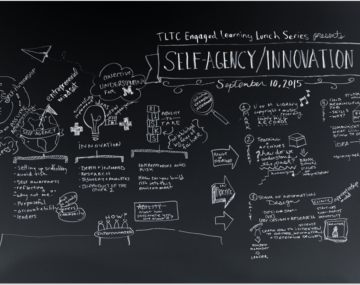
In the 20th century, American higher education was broadly conceived to provide students with the ability to write, to think critically, and to reason quantitatively, and these skills were often contextualized within a body of disciplinary knowledge, such as English literature, chemistry, or engineering. To engage 21st century challenges, students graduating today require other, equally important, capabilities to foster their intellectual, professional, and personal development.
The following goals and practices grew out of the work of the 2014 Provost’s Task Teams on Engaged Learning and Digital Instruction and have been vetted by many campus stakeholders, including the Council on Civic Engagement. This series of white papers describes the engaged learning outcomes in more detail and provides a review of the current literature on their assessment.
Engaged Learning Goals
These five learning goals capture a range of capacities students need to address contemporary societal problems in a world that is increasingly volatile, uncertain, ambiguous, and complex.
- Creativity – students must develop an understanding of creative processes and understand their own capacity to create new works and ideas. They must understand that creativity is not a rare gift to the few, but a fundamental human trait that can be developed and expanded.
- Intercultural engagement – our learners must understand the role of values and culture in driving decisions, and they must develop flexibility in working with others having different values.
- Social/civic responsibility and ethical reasoning – students should develop an understanding of the human, social and environmental impacts of actions, and develop the ethical reasoning tools to make sustainable and responsible decisions and they must develop their ability to hold and reason across the perspectives of multiple stakeholders.
- Collaboration, communication, and teamwork – students must have the ability to communicate with many audiences and to utilize varied formats and styles that will most effectively convey their messages. They must appreciate and leverage diverse contributions to a task, and know how to cooperate with others towards common purposes.
- Self-agency, the ability to innovate and to understand and manage risks – students must know how to observe the opportunities and capacities of human communities, understand where new or existing ideas or systems could bring value within those communities, and be able to act effectively in order to drive sustained and positive change to provide that value. This is sometimes called the entrepreneurial mindset.
Engaged Learning Practices
A key characteristic of these capacities is that they must be practiced to truly develop.
There are many examples of such experiences at the U-M, along a spectrum of engagement ranging from direct hands-on use of our museum collections, to undergraduate research, to education abroad experiences, to community-based learning programs. These High Impact Engaged Learning experiences allow students to engage with external communities and stakeholders whose interest in the work gives it deep meaning. Such experiences include:
- Discovery-based research experiences, including both UROP, SURE, and other experiences that engage students in the authentic process of discovery both with teams of researchers and in more solitary work. This work is creative, promotes critique and communication, and requires risk-taking and resilience.
- Global and international experiences place students in an unfamiliar environment, outside their comfort zone. These experiences challenge unexamined cultural assumptions, cultivate a new understanding of a participant’s own culture from a different perspective, widen the participant’s world-view to help them see new opportunities for action, and challenge and test their resilience and ability to communicate. These experiences could be for credit or co-curricular, and include summer experiences abroad as well as academic year engagements.
- Civic engagement opportunities put students in an unfamiliar environment, outside their comfort zone, to challenge their unexamined cultural assumptions and social norms, and challenge and test students’ resilience and communication abilities. These experiences are driven by accountability to and respect for an external stakeholder, and require that students act to create change. Examples include Semester in Detroit and Project Community.
- Internships, practicum, and clinical experiences are opportunities for immersion into a professional setting. Such experiences are driven by the demands of an external stakeholder and require action from the student to complete tasks and explore a profession. These may be for academic credit or not. Examples of these include the Development Summer Internship Program, individual supervised internships, or clinical placements.
- Client-based Projects are fundamentally opportunities to develop creative processes and apply knowledge and skills to meet client needs. Such projects are driven by the demands of an external stakeholder and require concrete output from the student. Examples of these include multidisciplinary design projects and consulting projects like Citizen Interaction Design or Strategic Public Policy Consulting.
- Entrepreneurship is founded on understanding the needs of a group of “customers” or stakeholders. Successful entrepreneurship requires understanding that community of stakeholders, their values and their opportunities. Examples include Detroit Neighborhood Entrepreneurs Project and Innovation in Action.
- Creative work and performance requires students to produce, curate, and/or interpret creative work for an authentic and/or critical audience beyond that of a typical course. For example, Belle Isle and Beyond: Cultivating Ecoliteracy through the Arts.


